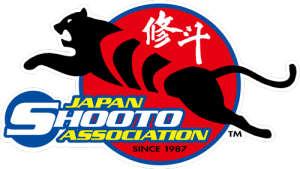I’ve met those who identify themselves as traditional Chinese martial arts stylists who feel “cross training” is wrong and perhaps even not “traditional”. Considering how many systems practiced today are derived from cross training, and how certain systems (such as Hsing Yi and Bagua) are now frequently practiced together, I think that’s a hard position to maintain. Yet, on the other end of the spectrum, I know quite a lot of people doing “Mixed Martial Arts” (MMA) whose approach is random, haphazard and often contradictory. Is there a proper way to cross train?

Before the first event, I read about the UFC in Black Belt Magazine. I wondered if the event was going to be staged, like professional wrestling. It seemed to me that with virtually no restrictions, someone who was well trained could do some serious damage to another person. In some regards, I was still naive about the reality of martial arts, but in another respect I was somewhat correct. The first three UFC’s, which I watched all one night on a VHS tape, weres sloppy and full of people who were very limited in their training. It was the age when you could really label someone a “striker” or a “grappler”. Even Royce Gracie, who was well trained in his family’s system and well prepared for the matches, demonstrated a one dimensional game.

While the UFC’s left me somewhat interested in what it was that this Gracie family from Brazil was doing, the real significant moment in my life was when I saw my first Shooto event. You have to remember (or go back and re-watch) that in the first few UFC events, the “stand up” was not too good. There were not many people trained in Muay Thai and its clinch, and the wrestlers had yet to show up. But in Shooto, I saw fighters who had impressive stand up skills AND were also fighting on the ground. So, honestly, I had a lot more respect for Shooto and its stand up.

Put another way, I saw Shooto and said to myself “well, with my existing training, I have a lot of the elements of stand up, what I need is ground training”. It may be hard to remember, but at that time, just cross training in Brazilian Jiujitsu was NOT an option. It was a time when it was “us against them” or “the Brazilians against the world”. So I started looking at Judo, Sambo, wrestling and eventually some “catch wrestling”.

So how does this relate to the title of this blog? Well, I began with an already existing frame, the method my teacher had taught me. I wasn’t just randomly training in things; I was looking for thing to fill the “gaps”. I was attaching additional material to an already existing frame.

The more I trained, the more I was exposed to different methods. And while initially I was most interested in the “ground”, along the way I learned more stand up in the form of standing wrestling, Muay Thai clinching, etc. But as I explained many times before, often I wasn’t learning something totally new as much as learning to look at them different ways and learning new ways to train them. A western wrestler may not know (nor care) about the many terms and concepts we have in Chinese martial arts, yet they are there in their pummeling and grappling.

Finally, I like to think I just didn’t randomly chose what I continued to practice and integrated into my method. I chose thing that were not only good fills for the “gaps” but also which, I think more importantly, worked with my already existing base method. I use the term “internally consistent“.
Learn more about my method in my book “The Master Text” available on AMAZON

Leave a comment